Why choose a baritone ukulele?
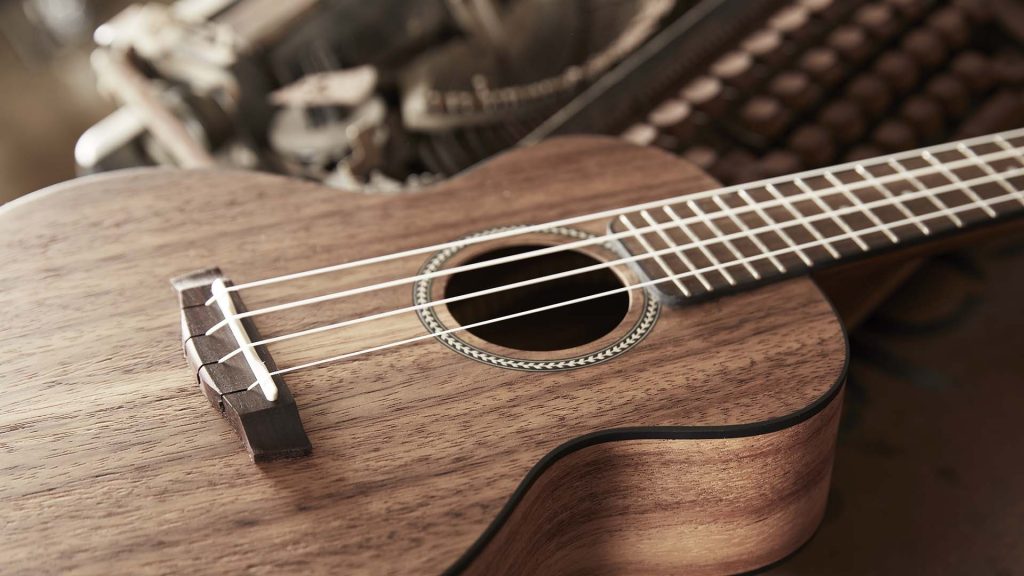 There are a few reasons you may want to choose a baritone ukulele over the other smaller options. The baritone has a sound that is lower and mellower than the other ukuleles can produce. It adds some warmth to the sound when playing with other ukulele types as well. In fact, a baritone sounds more like a classic nylon-stringed guitar, plus it tunes more like a guitar than any of the other three types. These features make it a good option for those who are considering learning to play guitar. The ukulele is easier to learn, with fewer strings, so you’ll be playing songs much faster, plus learning the basics you’ll need to know if you want to play guitar at some point in the future.
There are a few reasons you may want to choose a baritone ukulele over the other smaller options. The baritone has a sound that is lower and mellower than the other ukuleles can produce. It adds some warmth to the sound when playing with other ukulele types as well. In fact, a baritone sounds more like a classic nylon-stringed guitar, plus it tunes more like a guitar than any of the other three types. These features make it a good option for those who are considering learning to play guitar. The ukulele is easier to learn, with fewer strings, so you’ll be playing songs much faster, plus learning the basics you’ll need to know if you want to play guitar at some point in the future.
Features to consider before buying a baritone ukulele
If you’re looking at ukuleles, you may notice that they come with different features. To help you decide which ones are right for you, check out the following aspects.
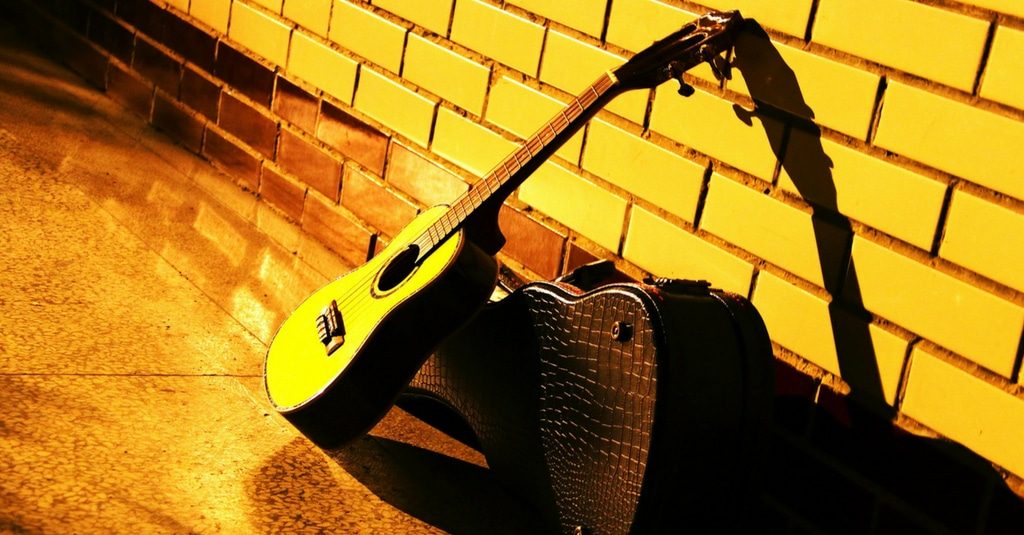 Acoustic vs. acoustic-electric
Acoustic vs. acoustic-electric
When ukuleles were invented, they were exclusively acoustic models. Even now, acoustic ukuleles are the most common type, which is why they are never called acoustic ukuleles. It is assumed that if you’re talking about this instrument, you are referring to an acoustic model. Like acoustic guitars, the ukuleles have a hollow body, with a sound hole in the front that catches the string’s vibrations and projects the sound out.
An acoustic-electric ukulele is similar to the acoustic models, only it has the addition of some built-in electronics that allow you to connect it to an external amplifier. This way, you can play it as an acoustic or plug it in for more sound projection, which is especially handy if you’re playing for a crowd. The sound you create will remain the same either way, you’ll just be able to adjust the bass, middle, treble, and volume when you’re plugged into the amp.
Materials used for body
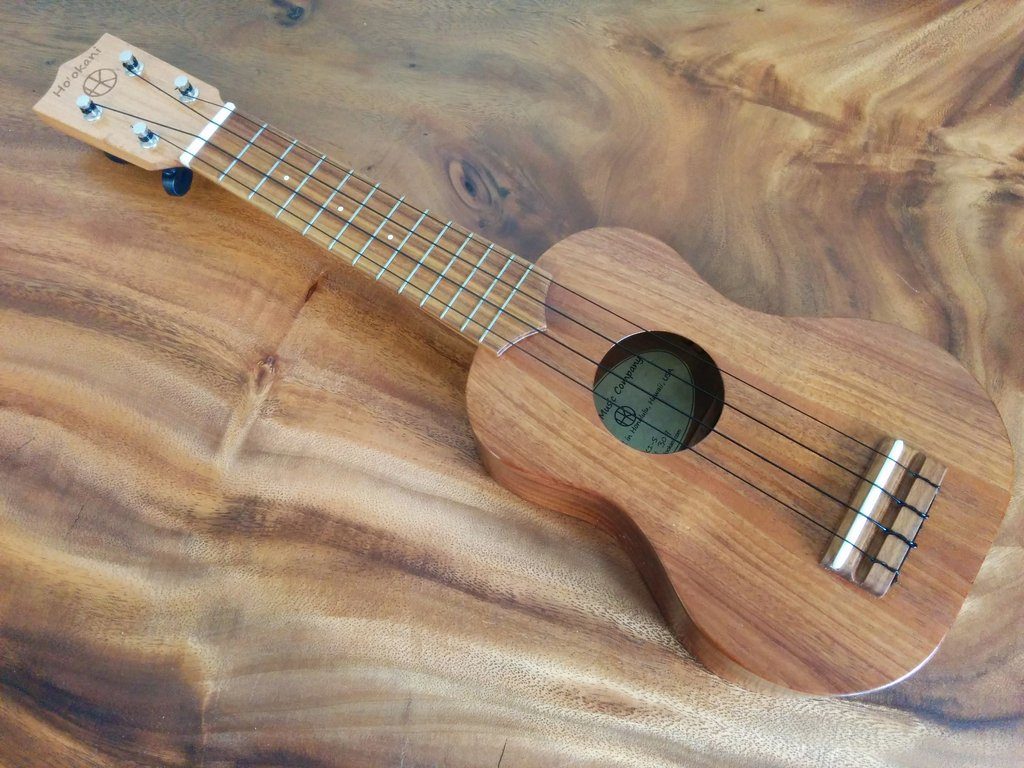 There are a number of woods used for making the bodies of ukuleles, each with its own benefits. Koa is from Hawaii, which is why it is most commonly used in the instruments from this area. It has a lovely grain pattern and gives the ukulele a warm sound. This wood is quite expensive though, so if you want the best cheap baritone ukulele, you’ll have to choose one that uses less costly materials.
There are a number of woods used for making the bodies of ukuleles, each with its own benefits. Koa is from Hawaii, which is why it is most commonly used in the instruments from this area. It has a lovely grain pattern and gives the ukulele a warm sound. This wood is quite expensive though, so if you want the best cheap baritone ukulele, you’ll have to choose one that uses less costly materials.
Mahogany is used in the majority of baritone ukuleles since the wood is cheaper to buy. It is strong and dense, creating a more focused sound that is a bit softer than koa, but still quite lovely.
Spruce is a softer wood, but still very strong when compared to some other wood options. It gives you a sound that is crisp, bright, vibrant, and loud, all at the same time. There is still some warmth to the tones, though, so your audience will hear the sounds they expect from a ukulele.
Cedar is another common wood for the body of some ukuleles. Though it is softer than spruce, creating a less pointed mid-range, it offers more bass, some complex overtones, and a sweeter sound.
Redwood is similar to cedar in many ways but produces a much larger sound that is quite unique when compared to the other body woods. This type of wood is rarely used, though, due to certain government protections on these trees.
Rosewood is used mostly on the back and sides, though you may find it on the top as well on some models, like the Caramel CB500. It isn’t as common as some of the other woods but gives you a decent mid-range, impressive low overtones, and it adds thickness to the higher range.
Another thing to consider with body woods is whether you’re getting solid wood or laminated wood. The solid wood is more expensive and needs more care than the laminate. The laminate uses cheaper woods on the inside of the body, with the better quality wood on the outside. Laminate may not sound quite the same, but it does improve the aesthetics and lowers the price significantly.
Fretboard and neck materials
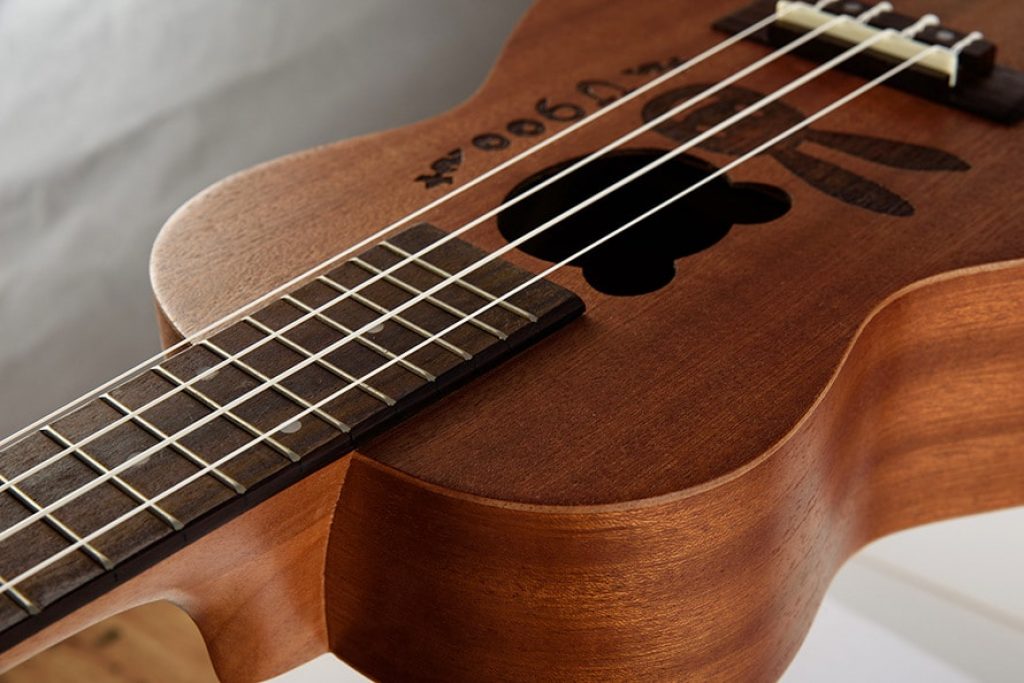 For the neck material, the woods are chosen more for their strength than they are for their tone and how nicely they match the body of the ukulele. The necks are usually lighter and weaker than instruments like guitars since ukuleles usually use nylon strings. Even stronger materials like mahogany are made thinner, so stay away from steel strings, or high tensions could risk snapping the neck of your ukulele.
For the neck material, the woods are chosen more for their strength than they are for their tone and how nicely they match the body of the ukulele. The necks are usually lighter and weaker than instruments like guitars since ukuleles usually use nylon strings. Even stronger materials like mahogany are made thinner, so stay away from steel strings, or high tensions could risk snapping the neck of your ukulele.
The fretboard is a long strip of wood that is attached to the neck right behind the strings. The most common fretboard material is walnut (like seen in the Kala KA-BG or the Caramel CB103) because it is hard enough to handle the pressure when you are pressing those strings down into the frets along the fretboard. This wood has a nice rich color, so it adds an attractive look to the guitar as well. Walnut is another popular choice for similar reasons.
Finish
When it comes to finishes, there are two main ones that you will find on baritone ukuleles. The first is the satin finish, like the one on the Kala MK-B. This creates a soft, matte look, which helps bring out the natural wood grain of the ukulele. It is easy to apply, so instruments with this type of finish are usually cheaper to buy. This is also an older finish style, so it is found on the majority of older models, as well as some new instruments.
A gloss finish (like on the Caramel CB103) adds a bit of elegance to a uke. It is brighter, almost mirror-like, plus is quite durable, so you won’t have to worry about it wearing away and leaving you with a dull-looking instrument. Another benefit of the gloss finish is that it enhances the natural colors and grain patterns of the wood used for the ukulele. It also adds some amazing tones and volume, so it is becoming more popular among ukulele enthusiasts. Applying gloss is a bit more difficult, requiring multiple applications and buffing to get it shining that bright, so it is more expensive than the satin finish.
Weight
Baritone ukuleles are generally quite light. In fact, the heaviest one on our list is the Kala KA-BE at only 2.9 lbs. This makes ukuleles a great instrument to hold in your lap and play for hours. Even if you are standing and using a strap, these instruments still won’t weigh you down and force you to take a break for quite a while.
As for portability, the lighter weight of the baritone ukulele makes them much easier to travel with, even if you plan on taking them on a plane. They won’t put you over any travel restrictions, so you can take it anywhere you go. Baritones are a bit larger than the other types of ukuleles out there but still light enough that you won’t dread carrying them around with you.
Extra features
As with any product, there are the main features and then a few extras you may want to check out. One is the appearance of the ukulele. Do you prefer a lighter wood or a much darker color? There are also bindings and different types of hardware, all of which can alter the appearance. Looks are the first thing you’ll notice, long before you even pick up the instrument, so be sure you like how the ukulele looks before you decide which one to buy.
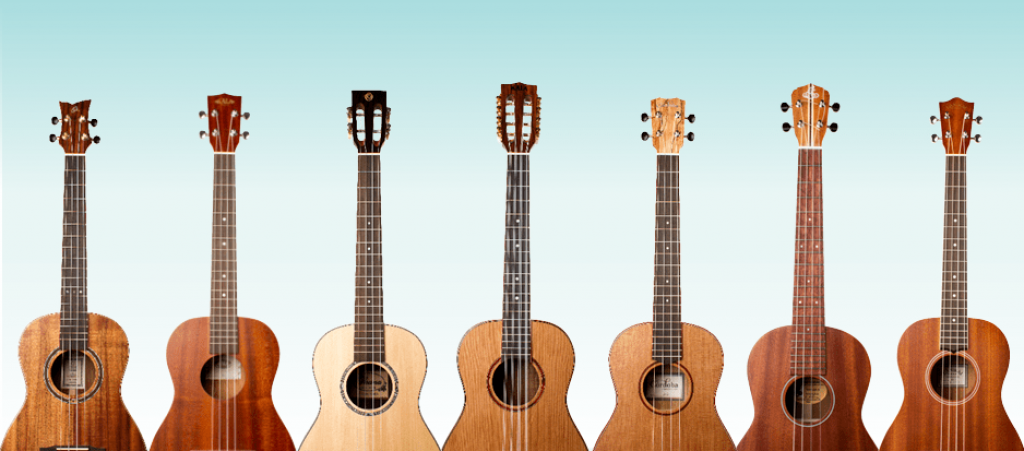 Another thing to look at is the strings. When you first buy a ukulele, you don’t know how long those strings have been on, so you may need to change them right away. Also, different strings create different sounds, plus have altering durability, so try out a few before deciding which ones are right for you.
Another thing to look at is the strings. When you first buy a ukulele, you don’t know how long those strings have been on, so you may need to change them right away. Also, different strings create different sounds, plus have altering durability, so try out a few before deciding which ones are right for you.
If the ukulele doesn’t come with a strap, they may not have strap buttons on them either. If a strap is something you feel you need, check if the buttons are already there, and if not, see how easy they are to add.
Another important feature you don’t want to overlook is the warranty. If the ukulele shows up and isn’t sounding quite as it’s supposed to, there may be some sort of issue with it. A decent warranty will cover you for any damage caused during manufacturing or shipping, so you won’t be charged to repair issues you didn’t cause.
How to tune your baritone ukulele
Tuning a baritone model is different from any other ukulele. It is actually the same as tuning the four lower strings on a guitar, tuning the D, G, B, E strings from low to high. You can use a tuner for this, but if you don’t have one, there is another method you can use to tune your ukulele by ear.
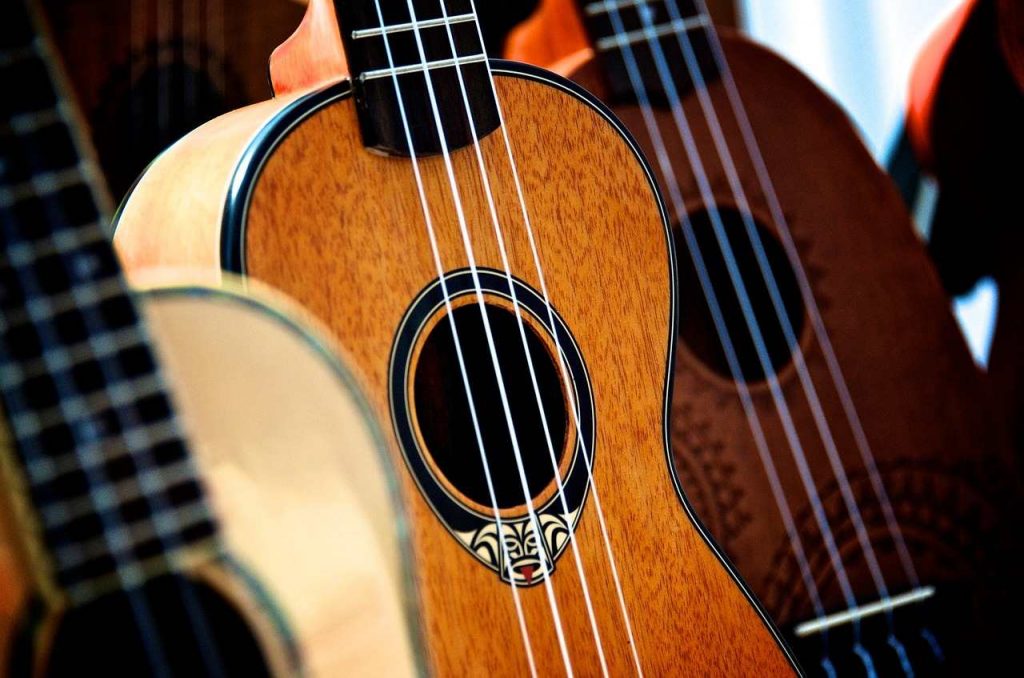 First, tune the D string, or the top string on the ukulele. You can use a piano, a guitar tuner, or an app if you have one handy. If not, tune it by ear as best you can.
First, tune the D string, or the top string on the ukulele. You can use a piano, a guitar tuner, or an app if you have one handy. If not, tune it by ear as best you can.- Once you have the D string tuned, press on the fourth fret, then match the G string to it.
- When the G string is in tune, press the third fret, and use that tone to tune the B string.
- For the E string, use the fourth fret of the B string, holding it while you strum the last string and matching them as best you can.






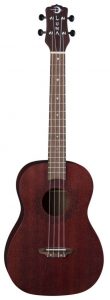
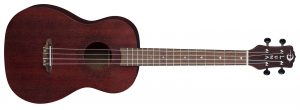
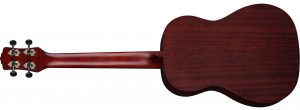



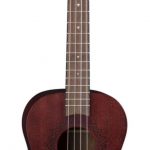
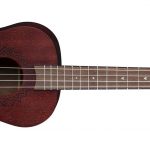
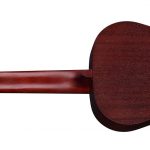
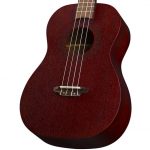
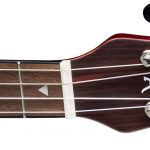
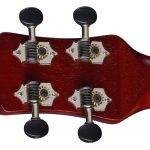


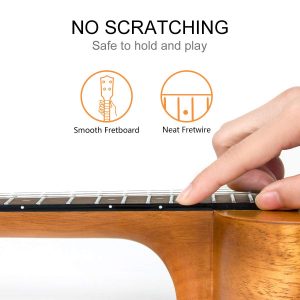
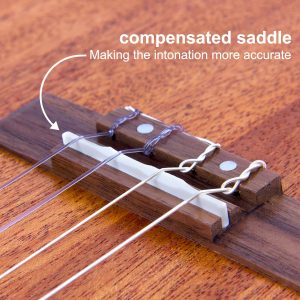
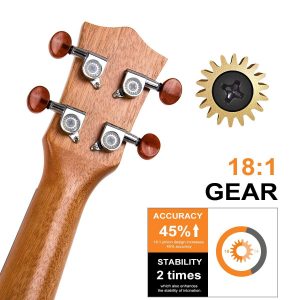

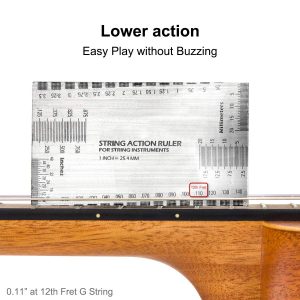
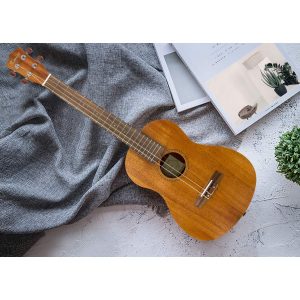
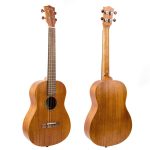


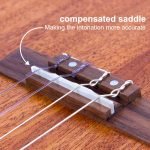
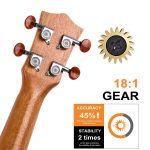
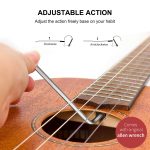
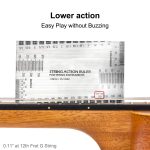
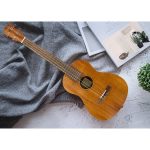

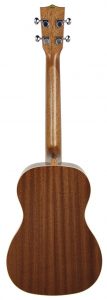
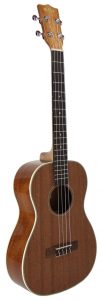




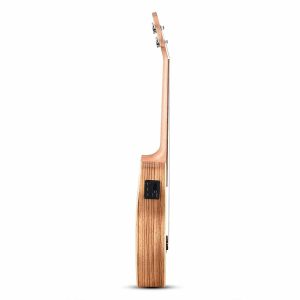
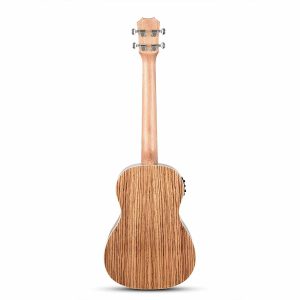
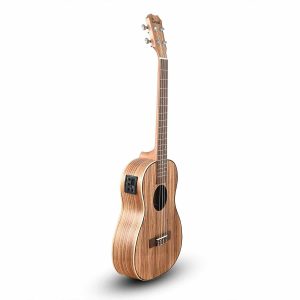
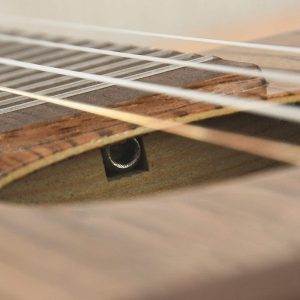
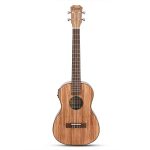
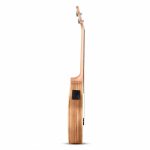
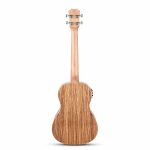
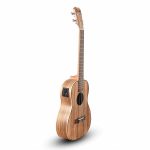
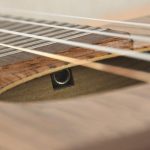


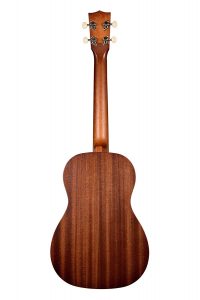
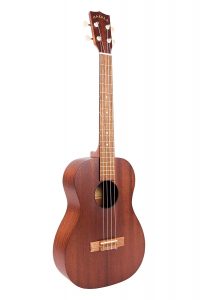
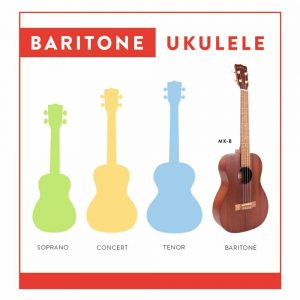

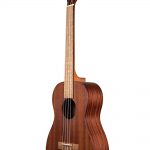
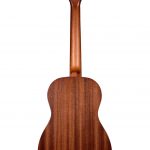
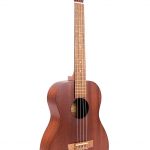
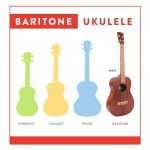

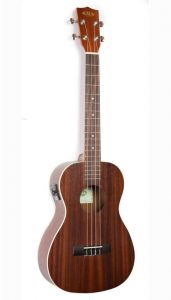
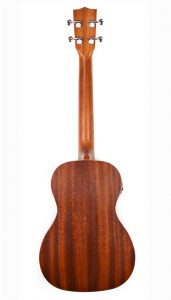
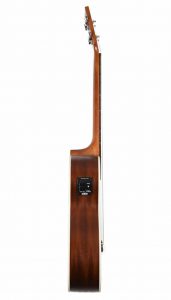
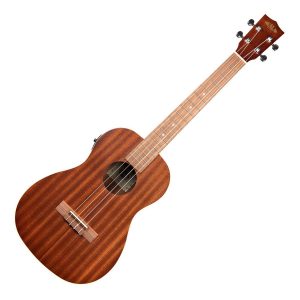

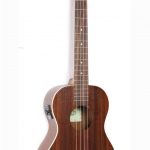

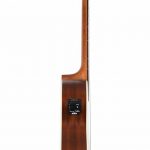

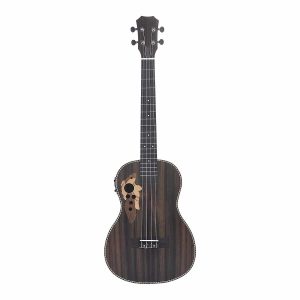

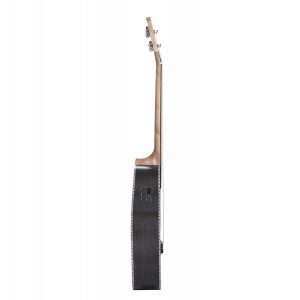
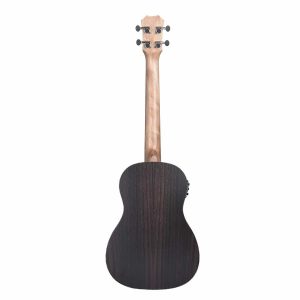
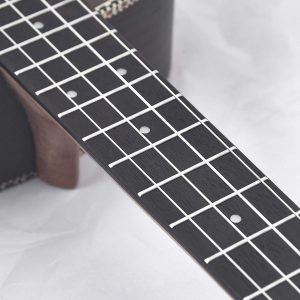

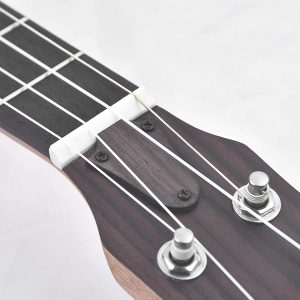
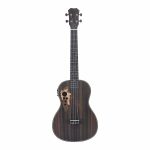

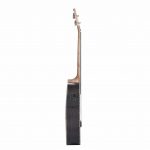
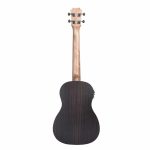

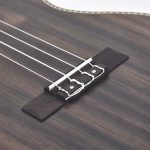
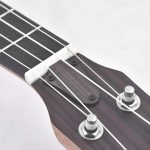
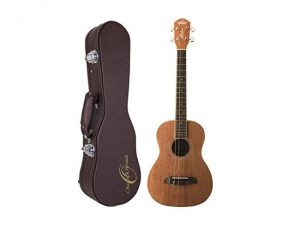
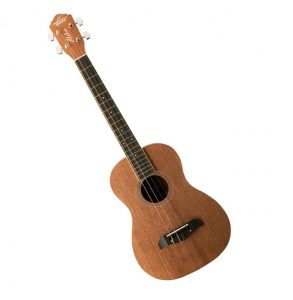
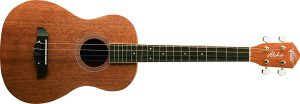
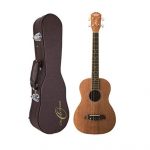


 There are a few reasons you may want to choose a baritone ukulele over the other smaller options. The baritone has a sound that is lower and mellower than the other ukuleles can produce. It adds some warmth to the sound when playing with other ukulele types as well. In fact, a baritone sounds more like a classic nylon-stringed guitar, plus it tunes more like a guitar than any of the other three types. These features make it a good option for those who are considering learning to play guitar. The ukulele is easier to learn, with fewer strings, so you’ll be playing songs much faster, plus learning the basics you’ll need to know if you want to play guitar at some point in the future.
There are a few reasons you may want to choose a baritone ukulele over the other smaller options. The baritone has a sound that is lower and mellower than the other ukuleles can produce. It adds some warmth to the sound when playing with other ukulele types as well. In fact, a baritone sounds more like a classic nylon-stringed guitar, plus it tunes more like a guitar than any of the other three types. These features make it a good option for those who are considering learning to play guitar. The ukulele is easier to learn, with fewer strings, so you’ll be playing songs much faster, plus learning the basics you’ll need to know if you want to play guitar at some point in the future. Acoustic vs. acoustic-electric
Acoustic vs. acoustic-electric There are a number of woods used for making the bodies of ukuleles, each with its own benefits. Koa is from Hawaii, which is why it is most commonly used in the instruments from this area. It has a lovely grain pattern and gives the ukulele a warm sound. This wood is quite expensive though, so if you want the best cheap baritone ukulele, you’ll have to choose one that uses less costly materials.
There are a number of woods used for making the bodies of ukuleles, each with its own benefits. Koa is from Hawaii, which is why it is most commonly used in the instruments from this area. It has a lovely grain pattern and gives the ukulele a warm sound. This wood is quite expensive though, so if you want the best cheap baritone ukulele, you’ll have to choose one that uses less costly materials. For the neck material, the woods are chosen more for their strength than they are for their tone and how nicely they match the body of the ukulele. The necks are usually lighter and weaker than instruments like guitars since ukuleles usually use nylon strings. Even stronger materials like mahogany are made thinner, so stay away from steel strings, or high tensions could risk snapping the neck of your ukulele.
For the neck material, the woods are chosen more for their strength than they are for their tone and how nicely they match the body of the ukulele. The necks are usually lighter and weaker than instruments like guitars since ukuleles usually use nylon strings. Even stronger materials like mahogany are made thinner, so stay away from steel strings, or high tensions could risk snapping the neck of your ukulele. Another thing to look at is the strings. When you first buy a ukulele, you don’t know how long those strings have been on, so you may need to change them right away. Also, different strings create different sounds, plus have altering durability, so try out a few before deciding which ones are right for you.
Another thing to look at is the strings. When you first buy a ukulele, you don’t know how long those strings have been on, so you may need to change them right away. Also, different strings create different sounds, plus have altering durability, so try out a few before deciding which ones are right for you. First, tune the D string, or the top string on the ukulele. You can use a piano, a guitar tuner, or an app if you have one handy. If not, tune it by ear as best you can.
First, tune the D string, or the top string on the ukulele. You can use a piano, a guitar tuner, or an app if you have one handy. If not, tune it by ear as best you can.




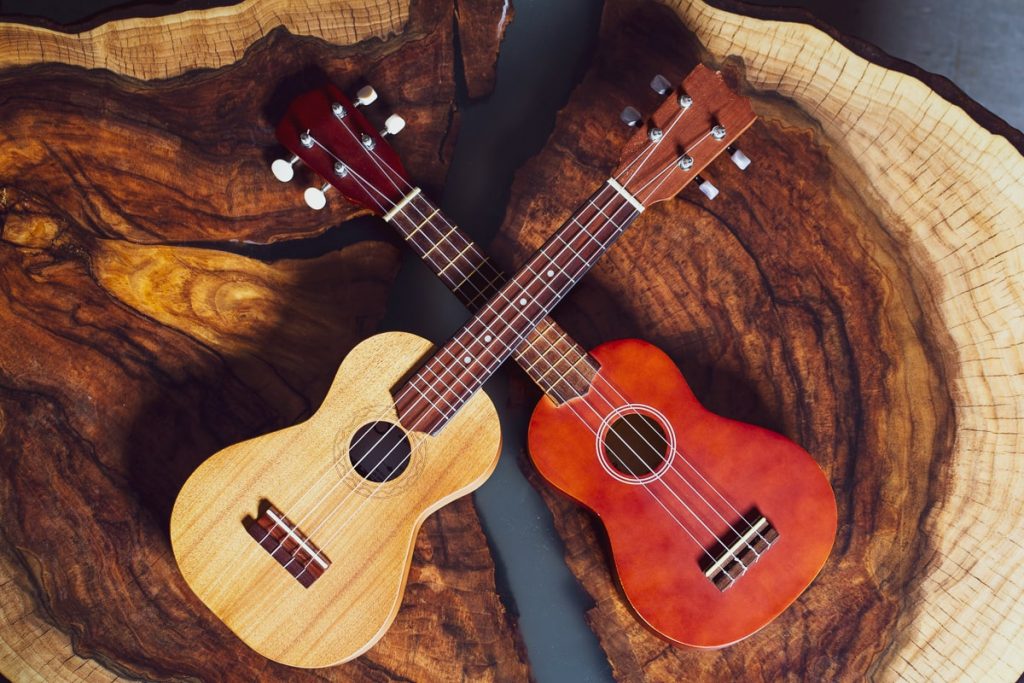

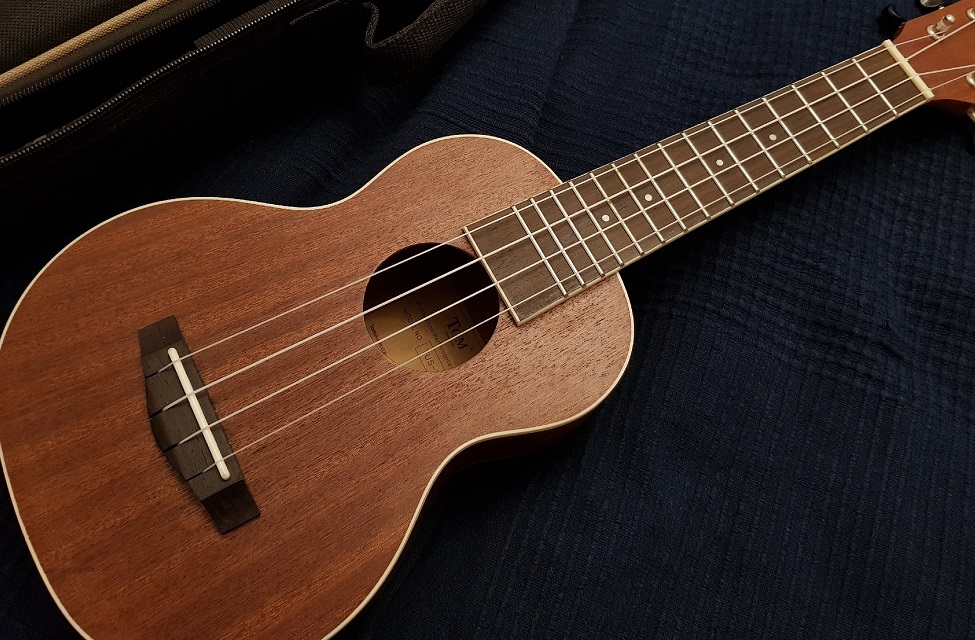



I realize this may be a generically generated “best” posting, but your section on tuning the Baritone is completely incorrect in case someone may want to change it. This section states: “First, tune the D string, or the top string on the ukulele. You can use a piano, a guitar tuner, or an app if you have one handy. If not, tune it by ear as best you can. Once you have the D string tuned, press on the fourth fret, then match the G string to it. When the G string is in tune, press the third fret, and use that tone to tune the B string. For the E string, use the fourth fret of the B string, holding it while you strum the last string and matching them as best you can. Source: https://primesound.org/best-baritone-ukulele”
In actuality, if you are tuning the strings against each other – it is the FIFTH fret of the D string that sounds a G for tuning the next string – not the FOURTH as stated. Next, it is the FOURTH fret of the G string that sounds a B for tuning the next string – not the THIRD, as stated. Finally, it is the FIFTH fret of the B string that sounds an E for tuning the E string – not the FOURTH fret as stated.
So, just in case anyone cares, or anyone wants to correct the misinformation in this article, there you go. THIS is why I always tell folks, “I read it on the internet so it must be true.” LOL